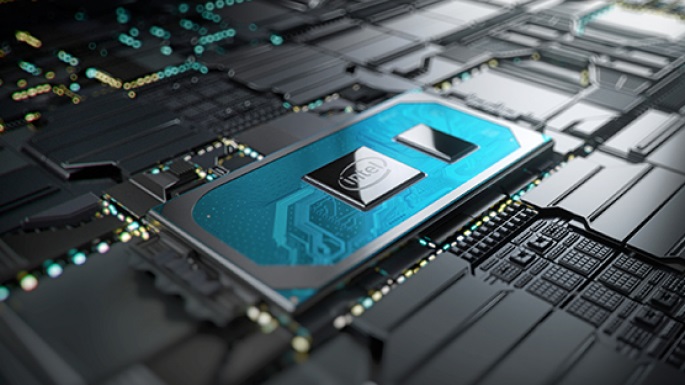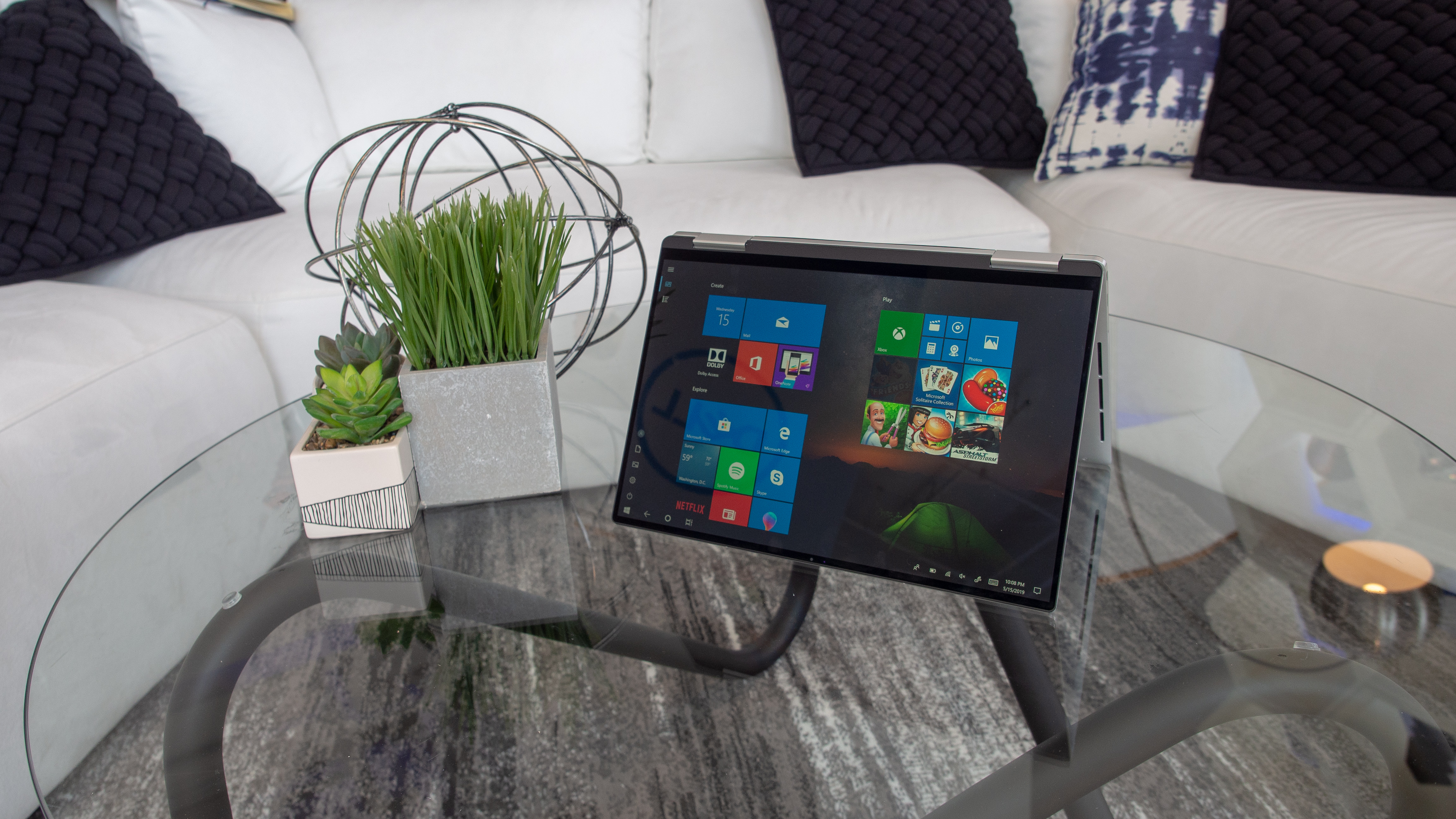Table of Contents
Intel Ice Lake is the herald the computing world has been waiting for – finally something we haven’t yet seen from Intel. These laptop processors are the first 10nm processors we’ve seen Intel put out in the mainstream – officially succeeding Intel Cannon Lake and beating it to the punch.
Intel Ice Lake chips were initially revealed at Computex 2019, and are the first commercially available processors that will move from the ageing 14nm process, which has been ‘enhanced’ repeatedly since the introduction of Broadwell almost five years ago.
With AMD going full steam ahead with its 7nm Zen 2 processors, including AMD Ryzen 3rd Generation and Threadripper 3rd Generation, it’s about time Team Blue’s chips caught up, even if it is only on the mobile side of things.
Luckily, Intel Ice Lake has finally arrived, and it should be rolling out to all kinds of laptops, Ultrabooks and Chromebooks over the next few months. However, because the naming is complicated (who thought “Intel Core i7-1065G7” was a good name?), we thought it would be a good time to collect all the Ice Lake information in one place. So, be sure to keep this page bookmarked, and we’ll keep it updated with any and all 10nm developments.
Cut to the Chase
- What is it? Intel’s next-generation, 10nm CPU lineup
- When is it out? Out now
- What will it cost? Depends on the laptop running it

Intel Ice Lake Release Date
Intel announced Ice Lake way back at CES 2019, and it came as a bit of a surprise, especially when Team Blue said it would be out before the holiday season hit. However, Intel did stick to the plan, having released the Intel Ice Lake processors on August 1, 2019.
As for when these processors will finally hit the streets, we’ll start seeing laptops and Ultrabooks packed with these new U- and Y-series processors over the next few months. In fact, we expect a good amount of them to appear at IFA 2019.

Intel Ice Lake price
Intel Ice Lake is a mobile platform. While that does mean that laptop manufacturers have to pay Intel for the right to use its laptops, the price of the laptops using the chips will vary depending on the product.
Still, you’ll probably see entry level laptops using the Intel Core i3-1005G1, while only the most powerful flagships will get the Intel Core i7-1068G7.

Intel Ice Lake specs
The marquee feature of Intel Ice Lake is, of course, the new underlying 10nm Sunny Cove architecture. What’s more, these new processors will be the first to feature next-generation Gen11 graphics.
Overall, Intel promises a 2x performance boost, thanks to the smaller fabrication processes and the die shrink from 14nm. However, Ice Lake mobile processors are limited to 4-cores.
Besides the chips’ main microarchitecture, Ice Lake CPUs also comes with native support for Thunderbolt 3, Wi-Fi 6 (802.11ax) and DL Boost.
The new graphics are a significant improvement from the Gen9 GPU found in Intel’s current line of processors, which only featured 24 EUs, or Execution Units – whereas these new Ice Lake processors feature up to 64 EUs in the Intel Core i7-1068G7.
One thing we did notice right away is that the boost speeds of these processors are slightly lower than their Whiskey Lake predecessors. For instance, the Intel Core i7-8565U features a boost clock of 4.6GHz, compared to the 3.9GHz boost of the Intel Core i7-1065G7. This is somewhat worrying, but because these chips feature higher IPC performance, we should see a boost in speed anyway – something we’re sure to test once we get our hands on an Ice Lake laptop.
Finally, Intel says that Ice Lake is supposed to help devices achieve a battery life of over 25 hours. This is mostly thanks to Team Blue performing a top-to-bottom analysis of power draw to reduce energy consumption, and also using AI to intelligently alter the processor’s performance to maximize efficiency.
- Intel Core i7-1068G7 – 4-cores, 8-threads | Intel Iris Plus | 64 EUs| 4.1GHz boost
- Intel Core i7-1065G7 – 4-cores, 8-threads | Intel Iris Plus | 64 EUs|3.9GHz boost
- Intel Core i5-1035G7 – 4-cores, 8-threads | Intel Iris Plus | 64 EUs|3.7GHz boost
- Intel Core i5-1035G4 – 4-cores, 8-threads | Intel Iris Plus | 48 EUs|3.7GHz boost
- Intel Core i5-1035G1 – 4-cores, 8-threads | Intel UHD | 32 EUs | 3.6GHz boost
- Intel Core i3-1005G1 – 2-cores, 4-threads | Intel UHD | 32EUs | 3.4GHz boost
Ice Lake Y-Series processors:
- Intel Core i7-1060G7 – 4-cores, 8-threads |Intel Iris Plus |64 EUs | 3.8GHz boost
- Intel Core i5-1030G7 – 4-cores, 8-threads |Intel Iris Plus |64 EUs | 3.5GHz boost
- Intel Core i5-1030G4 – 4-cores, 8-threads |Intel Iris Plus |48 EUs | 3.5GHz boost
- Intel Core i3-1000G4 – 2-cores, 4-threads |Intel Iris Plus | 48 EUs | 3.2GHz boost
- Intel Core i3-1000G1 – 2-cores, 4-threads | Intel UHD | 32 EUs | 3.2GHz boost
That’s about all we know about Intel Ice lake right now, but we’ll be sure to update this guide once we get our hands on an Ice Lake-powered laptop so we can see how well it performs. But, if the early numbers and Ice Lake specs are anything to go by, it looks like there’s going to be a significant bump in performance over Whiskey Lake.
- Here’s everything you need to know about Intel Lakefield
- Intel Core i7-1060G7 – 4-cores, 8-threads |Intel Iris Plus |64 EUs | 3.8GHz boost
- Intel Core i5-1030G7 – 4-cores, 8-threads |Intel Iris Plus |64 EUs | 3.5GHz boost
- Intel Core i5-1030G4 – 4-cores, 8-threads |Intel Iris Plus |48 EUs | 3.5GHz boost
- Intel Core i3-1000G4 – 2-cores, 4-threads |Intel Iris Plus | 48 EUs | 3.2GHz boost
- Intel Core i3-1000G1 – 2-cores, 4-threads | Intel UHD | 32 EUs | 3.2GHz boost
- Intel Core i7-1060G7 – 4-cores, 8-threads |Intel Iris Plus |64 EUs | 3.8GHz boost
- Intel Core i5-1030G7 – 4-cores, 8-threads |Intel Iris Plus |64 EUs | 3.5GHz boost
- Intel Core i5-1030G4 – 4-cores, 8-threads |Intel Iris Plus |48 EUs | 3.5GHz boost
- Intel Core i3-1000G4 – 2-cores, 4-threads |Intel Iris Plus | 48 EUs | 3.2GHz boost
- Intel Core i3-1000G1 – 2-cores, 4-threads | Intel UHD | 32 EUs | 3.2GHz boost



